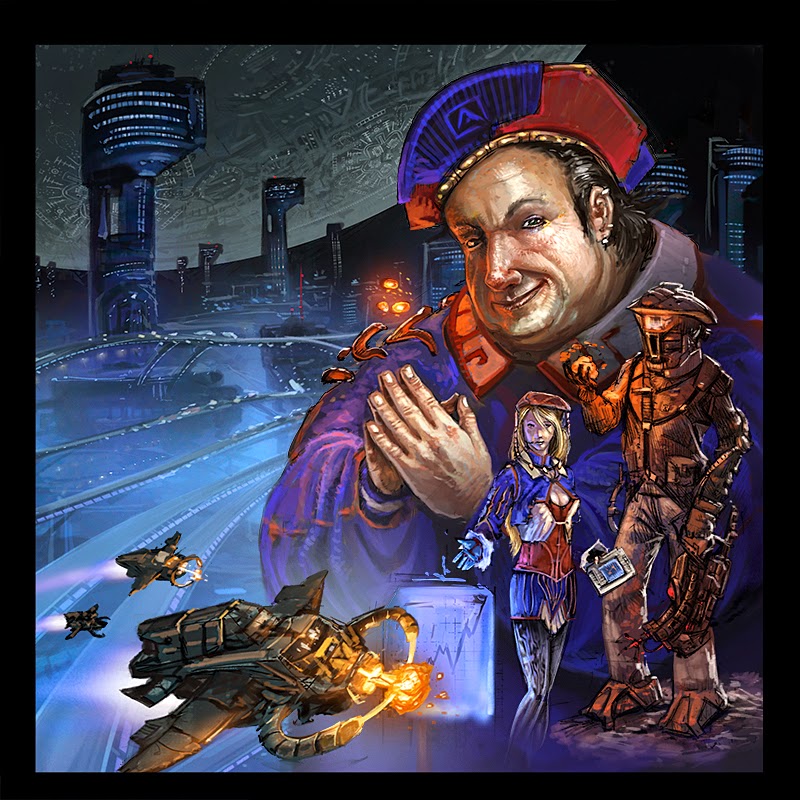 |
| Image source: BoardGameGeek |
Looking back at some of the recent debates and controversies in the boardgaming world (casually sacrificing slaves in Five Tribes, the idea of running a strip club in Lap Dance or our own little teacup tempest involving Progress and the Atheism card), I can only conclude that a lot, if not almost all, depends on sensibilities. And these can vary immensely, as some people will happily spread a supernatural plague in Chaos in the Old World, while others will shy away from literally shooting some crap or, to be more accurate, flinging some Poo. What’s more, you can also sometimes find that it’s not people, but one and the same person that will be able to commit acts much more heinous in one game, while refusing to do something seemingly more innocent in another.
With all that in mind, how can a publisher avoid creating a product with a theme that will be more a deterrent than an encouragement to play?
First of all, a publisher should stay reasonable and, from time to time at least, perform a reality check. All people probably are ashamed of something they once said, but not all managed to manufacture their blunder in five thousand copies and put it on shelves of hobby stores around the world. That is exactly why, when theming the game, you should talk to people and see what they think not only of the mechanisms, but also about the thematic ideas of your game, before it’s all on paper.
 |
| Image source: BoardGameGeek |
Secondly, while we’re on the topic of talking to people: talk to as many as you possibly can, preferably making your advisors culturally diverse, to save you a lot of grief. To give you an example, let me just say that I don’t know if creators of Carnival Zombie were aiming at making their game controversial, or if they placed a gun-wielding character named Columbine in their product simply because (much like me), they associated the name primarily with a Commedia dell’arte character, and not with a tragic shooting that took place in an American high school. I can only say that I was quite surprised when I stumbled upon Rahdo’s Runthrough of the game and discovered that to an American, what was my (a Pole’s) first association regarding Columbine, was merely an obscure reference, made completely superfluous by the relatively recent and tragic events.
 |
| Image source: BoardGameGeek |
Finally, if we agree that some games (not all by far) do have a message, there is one more thing you could consider – and I was made to consider it for the first time, while talking about CO2. As it happened, I was having a conversation about the game shortly after it came out and I (like a few others) expressed my doubts about its theme, considering not buying CO2 because of how one-sided it was in delivering its environmental message. The game finally ended up in my collection, but during that one conversation, I was asked a simple question: “But you had no problem playing Doom, right?”.
Doom is mindless fun with no aspirations, and it’s certainly not trying to seriously convince me that decorating walls with blood and internal organs of a couple of futuristic jarheads (which is the essence of the game if you are the Invader) is something good, noble or outright necessary for the survival of human race. Simply put, it wasn’t trying to teach me a lesson. CO2 on the other hand was – by making a case in a real world issue, and by trying to force me to take something very specific away from the game table. And that made me (and some other people) question the theme and the ideas it was selling.
 |
| Image source: BoardGameGeek |
All the above boils down to a relatively simple formula, which by no means has the ambition to become the ultimate guide on how to avoid controversies when publishing a game, but which may ultimately help you out a little bit. If you want to say something through your game – be sure you know the consequences, and if you don’t – be sure you are really not saying anything (for a simple solution just make a game about trading in the Mediterranean). And as for the nature of mindless violence not being controversial while environmental issues making some people uncomfortable – I recognize the peculiarity of this situation, but it’s a topic for a completely different discussion. And one that I do not feel equipped well enough to tackle.
Not yet, at least.
I would like to thank our Twitter followers, our Facebook fans and our Kickstarter backers for inspiring me to write this post. It’s nothing short of awesome having people like you around to sometimes be reminded of how diverse we can all be – and how our great hobby allows us to share thoughts and ideas… or just sit down at the same table and have fun together.
__________________
FIND OUT MORE NSKN official website | Facebook | BGG
Follow us on Twitter: @NSKNGames













